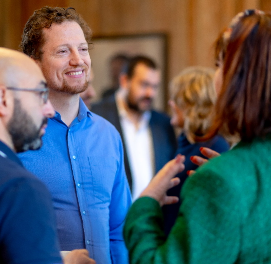In our previous two blogs we tackled the importance of organisational culture and how it can be measured. We analysed why we cannot separate organisational culture from the hard statistics in our business. As Peggy Johnson, former Vice President of Business Development at Microsoft, said, “When a culture is broken, the cracks show – morale is weakened, but so is profit and performance.”
The key to cracking organisational culture is awareness. Someone once said, “Leadership comes from within” and that “self-awareness is the start of this journey.” The same is true of culture. We cannot begin to change the culture of our organisation until we understand what defines the culture we already have.
There are many perspectives on organisational culture. In this post, I will outline a general classification of cultural characteristics that tend to be found in successful organisations. Check your organisation against this classification. Become more aware of your own organisational culture, so you can begin shaping it. In a subsequent post, my colleague Andrea Cardillo will outline a more recent classification based on Frédéric Laloux’s book Reinventing Organisations.
Characteristics of an Inclusive culture
An inclusive culture is one that prioritises diversity and cross-culture unity. While this may be partially achieved through policies and programs, it is also driven by the language we use and the platforms we give to people to express themselves. The advantage of an inclusive culture is that it enhances all other types of culture. When a diverse team feels included, it creates opportunities for cross-pollination of ideas which in turn drives tangible outcomes for the organisation.
Characteristics of a Learning culture
A learning culture is one that prioritises the exchange of knowledge. It not only has a top-down mentoring program, it also values the informal sharing of information and experience across levels. This kind of culture can improve an organisation’s performance dramatically. A report by the Human Capital Institute revealed that “65% of employees are highly engaged in [these] culture organisations compared to only 52% of employees in other organisations. [These] organisations also report greater financial performance.”
Characteristics of an Empowerment culture
An empowerment culture prioritises autonomy and ownership of work. It enables employees at every level of the organisation to enact change. The result of maintaining this cultural trait is pervasive: innovation increases, employee satisfaction and engagement explode, managers tend to perform better.
Characteristics of a Winning culture
A winning culture prioritises achievement. This cultural trait can unite teams around capability, generating a sense of common purpose based on inclusion in an elite group. And yet, as pointed out in the HBR Leader’s Guide to Corporate Culture, over-emphasising a winning culture “may lead to communication and collaboration breakdowns and higher levels of stress and anxiety.”
Characteristics of a Feedback culture
A feedback culture prioritises direct communication so that improvements can be driven in a timely manner. While this can be achieved through formal performance reviews, the most successful feedback cultures encourage feedback at all levels. When employees and managers alike actively seek out feedback because they are determined to keep learning, high levels of performance will naturally follow. Marcus Buckingham and Ashley Goodall write in HBR, “Learning happens when we see how we might do something better by adding some new nuance or expansion to our own understanding.” A culture of feedback gives everyone the chance to keep growing.
Characteristics of an Innovative culture
An innovative culture prioritises freedom of ideas. For an innovative culture to grow, failure should be celebrated. The MIT Sloan Management Review notes how W. L. Gore successfully create a climate of safety to experiment: “When a project is killed, staff celebrate its passing with beer and champagne. When a project fails, a post-mortem is conducted. Flawed concept or poor execution? Bad decisions? The goal of these post-mortems is not to punish, but to learn and improve.”
What about your organisational culture?
So where does your organisation stand? These cultural characteristics aren’t mutually exclusive, and it’s often the interplay of different characteristics that makes a specific organisation so successful. And as the goldfish bowl metaphor so visually depicts, the goldfish may find it difficult to understand it is immersed in water – its culture so to say. If you need some outside perspective to help understand your own organisational culture, check out our leadership consultancy services.





